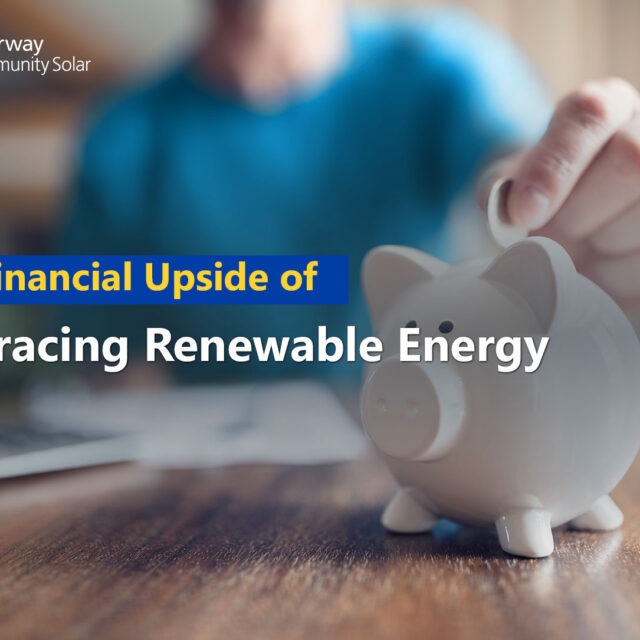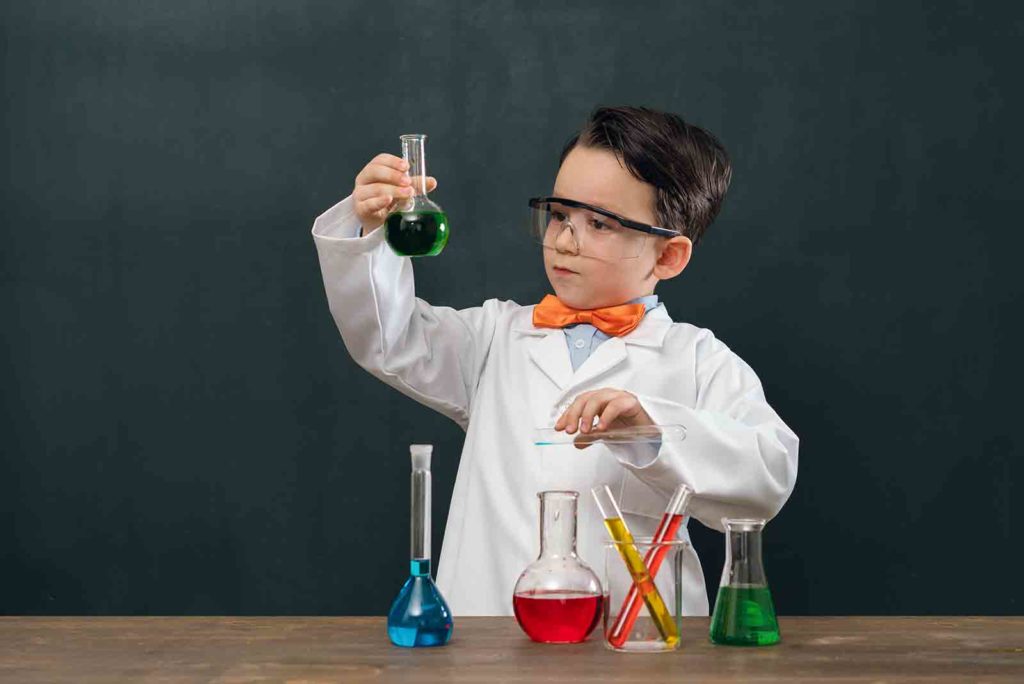
Parental Note: This experiment is geared toward ages 11 and up, to be completed independently. The project will require some adult support when cutting materials.
Experiment Overview:
Our planet is full of many different living environments. Some places on Earth are warm and tropical, full of lush plants and exotic animals, while other locations are completely covered in sand or ice. However, there is one thing that every environment has in common: a community of organisms that depend on each other for survival. Or more commonly called, an ecosystem.
The basic definition of an ecosystem is a large community of living organisms (plants, animals, insects, microbes) that are all found in one particular area/location. When you dig even deeper into the idea of an ecosystem, you learn that it is a delicately balanced community that consists of both living and non-living parts. The living environment consists of plants and animals that depend on each other to survive. The non-living materials include rocks, soil, sand, water, minerals, and air. A functioning ecosystem also depends on physical components as well (weather, air quality, water conditions) so both plants and animals can function properly and thrive in their community. Ecosystems are made up of a balance between these living, non-living and physical components. From food chains to climate factors, ecosystems are far more complex than simply a community of living organisms.
Ecosystems fall into two major categories: terrestrial (land-based ecosystem) and aquatic (water-based ecosystems). These two types of ecosystems can then be divided into even smaller classifications called biomes:
Terrestrial:
- Forest
- Grassland
- Desert
- Tundra
Aquatic:
- Freshwater
- Marine
*It is important to note that a biome can contain several different ecosystems.
You may be asking the question, why are ecosystems important to humans? Since ecosystems provide animals and plants with all the materials needed to survive, they are an important part of our planet and human existence. Our shelter, food, and community come from the ecosystems (and biomes) in which we live. In this experiment, we are going to create a self-sustaining ecosystem and dig deeper into the idea of how living, non-living, and physical conditions can affect an ecosystem, as well as human life.
Experiment Materials:
- 1 goldfish or another hardy species of fish (betta or tetra)
- 1 container of fish food
- 1 packet of aquarium rocks
- 1 small plant
- 1 to 2 cups of plant soil
- 1 clear plastic soda bottle, medium or large
- 2 coffee filters
- 9 pieces of cotton yarn or string (14 inches in length)
- 1 large container (to hold room temperature water for fish ecosystem)
- Marker
- Scissors or sharp knife
Note: Be sure to work with an adult to ensure the safety of the fish in the experiment. Be sure that your parents are also okay with you committing to a new pet at home, and that you have all the proper equipment to move the fish into a new fishbowl, or have a friend or neighbor who will take care of the fish as their pet.
Prep: Before beginning the experiment, fill a large container with 4 cups of filtered water. Allow the water to reach room temperature (it should take a few hours). This will be the water used for the goldfish’s ecosystem.
Experiment Process:
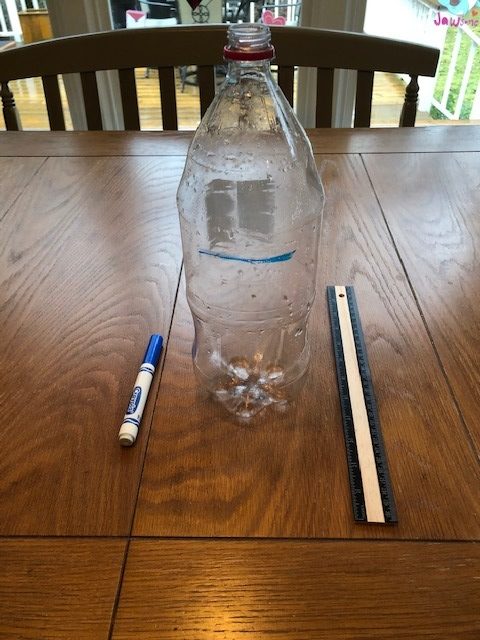
Step 1
Measure one-third (⅓) of the way down from the top of the clear plastic pop bottle (roughly five inches) and draw a line using a marker. With help from an adult, cut the soda bottle (on the line) so that the top can be completely removed. Once cut, clean the plastic bottle.
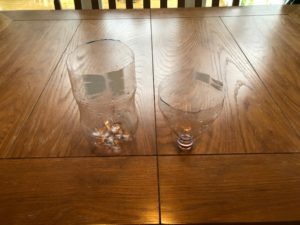
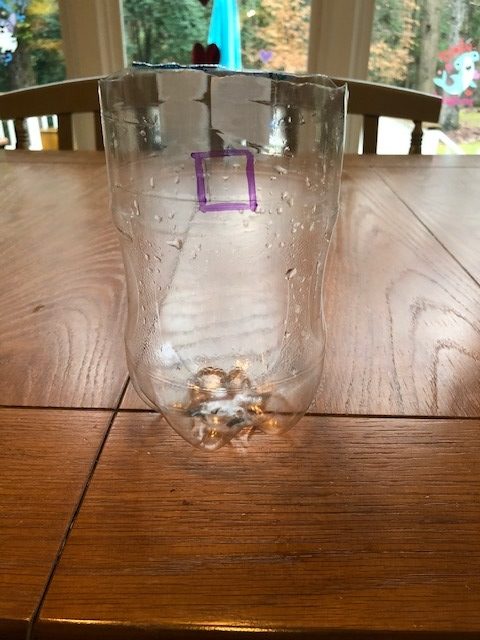
Step 2
With help from an adult, cut a small hole in the side of the larger section (the base) of the bottle. Cut the hole one inch down from the top. This small hole will be used to feed the fish when the ecosystem is complete.
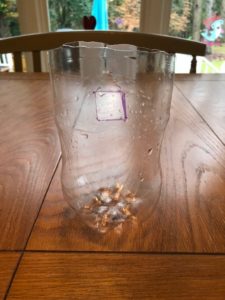
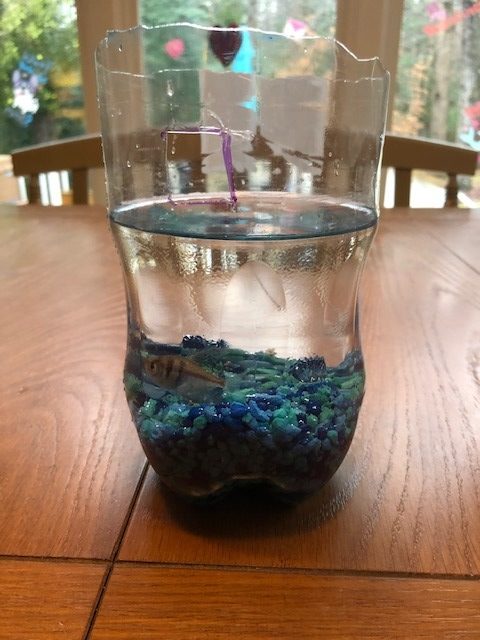
Step 3
In the larger base of the pop bottle, add two cups of aquarium rocks to create a rocky floor for the fish. The aquarium rocks should create a one-inch layer at the bottom of the pop bottle. Add the room temperature water to the pop bottle so that it fills the container less than halfway (about two-three cups of room temperature water). Place the fish in the water.
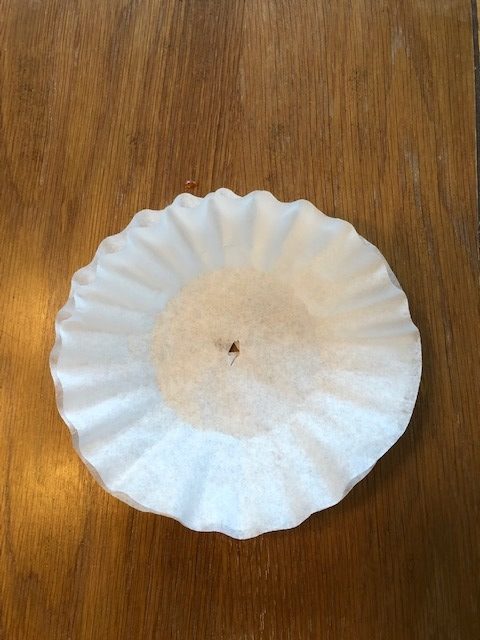
Step 4
Next, place two coffee filters together and cut a small hole in the middle of the filters.
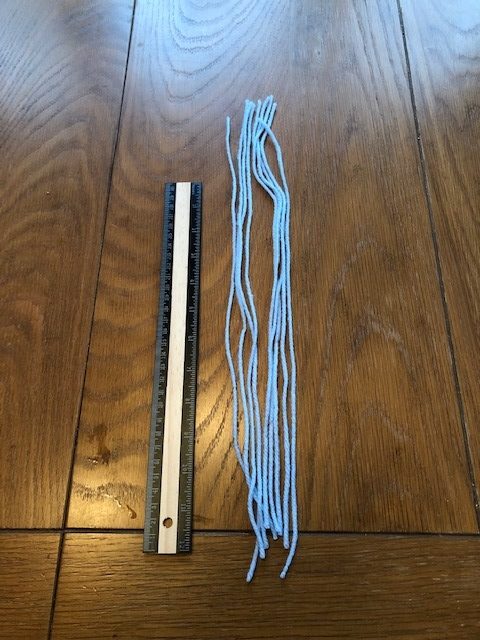
Step 5
Cut nine (9) pieces of string roughly 14 inches long and tie a knot at one of the ends. Braid the strings together to create a thick wick and knot the other end so that the strings do not come apart.
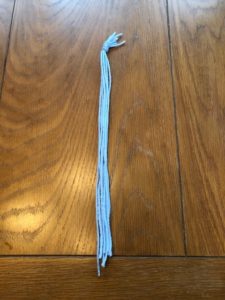
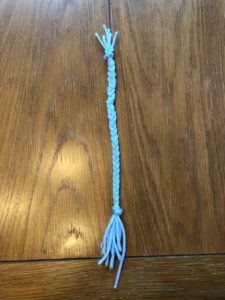
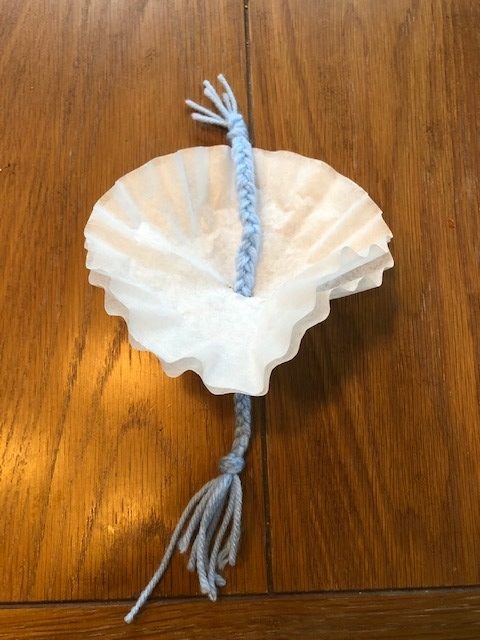
Step 6
Thread one end of the cotton wick through the hole in the coffee filters leaving roughly five inches of the string at the top and the rest dangling down.
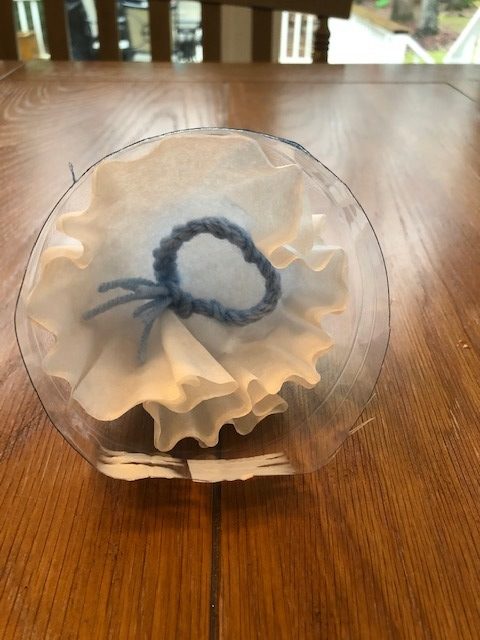
Step 7
Place the coffee filter and string combination into the inverted top section of the bottle. Make sure the bottom of the braided strings hangs down from the spout of the pop bottle. Coil the other end of the braided strings so that it wraps around the base of the coffee filter.
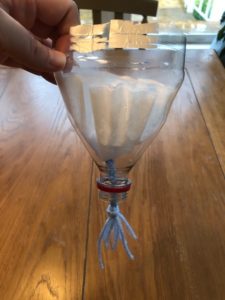
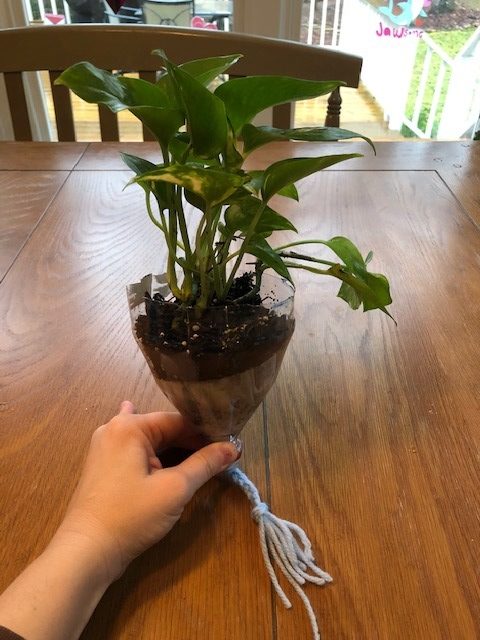
Step 8
Take the plant and place it into the inverted top section with the coffee filter and string. Add extra potting soil to fill up any extra space. Make sure that the top section of the string is still coiled around the base of the coffee filter and resting near the roots of the plant. (Note: this string will provide the plant with water).
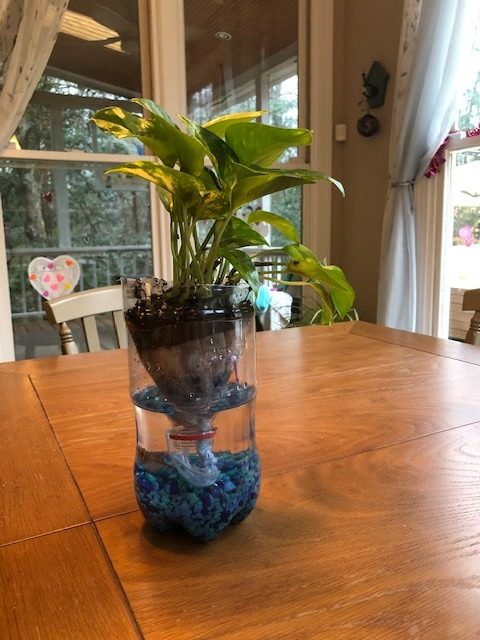
Step 9
Place the plant on top of the larger section of the pop bottle that contains the water and fish so that the string hangs down into the water.
Note: Add water to the ecosystem if the string is not submerged.
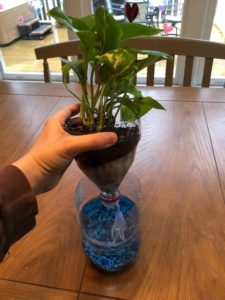
Step 10
Place the bottle ecosystem in sunlight (not direct sunlight) and observe each day for three days. Ask yourself these questions:
- How does the plant survive?
- What role does the fish play in this ecosystem?
- Why does the pop bottle need to be placed in the sun?
- What would happen if the water became contaminated?
Note: Make sure to feed the fish daily and also change the water frequently when it gets cloudy.
Conclusions:
Congratulations on making an ecosystem with living and non-living parts. As we wrap up the experiment, let’s discuss the questions posed in step nine of the experiment.
How does the plant survive?
- The water, rich with nutrients from the fish, is absorbed through the string and distributed to the coffee filter and soil. The water needed for the fish is also the water used by the plant to survive.
What role does the fish play in this ecosystem?
- The fish’s waste (poop), decomposing fish food, and water provides key nutrients for the survival of the plant. The water that gets wicked up the string hanging down from the roots is both quenching the plant’s thirst and feeding the plant key nutrients for growth.
Why does the soda bottle need to be placed in the sun?
- The plant needs sunlight to grow and produce a chemical reaction called photosynthesis. Without the sun, the plant would start to turn a sickly white color and essentially stop growing.
- The fish (in this case Tetra fish) also need a natural light source to 1) keep the water temperature warm 2) indicated a day/night sleeping pattern 3) help the fish to regulate food intake 4) if a fish is not given enough natural sunlight, the coloring will change to an unhealthy white as well.
What would happen if the water became contaminated?
- Each element in this ecosystem must function properly for the organisms to grow and thrive, that includes both physical and environmental conditions. Clean water, proper sunlight for plant growth and clean air are all components needed for the fish to live and the plant to continue to grow. If contaminants were introduced to the ecosystem (through the polluted water or air) the delicate balance is thrown off and both the plant and animal will suffer and potentially die.
It is easy to see how intricate an ecosystem really is for both plant and animal survival. There are many factors that come into play to keep an ecosystem functioning properly. From the sun (a renewable resource) to the health of the animals living in the community, an ecosystem is not just the organisms but also the non-living and physical conditions. Think of one idea before concluding this experiment – what role do humans play in the proper functioning of an ecosystem? Do you think we are helping ecosystems around the globe or hurting them? Justify your answers with facts by researching the idea further with the help of an adult.
Extension:
- What is an ecosystem?
- What are the functioning parts of an ecosystem?
- How can physical conditions alter an ecosystem?
- How would a hurricane or other natural disasters affect an ecosystem?
- How would pollutants affect an ecosystem?
- What is the role of humans in an ecosystem?
- Can you create an ecosystem that supports more than one type of animal?


